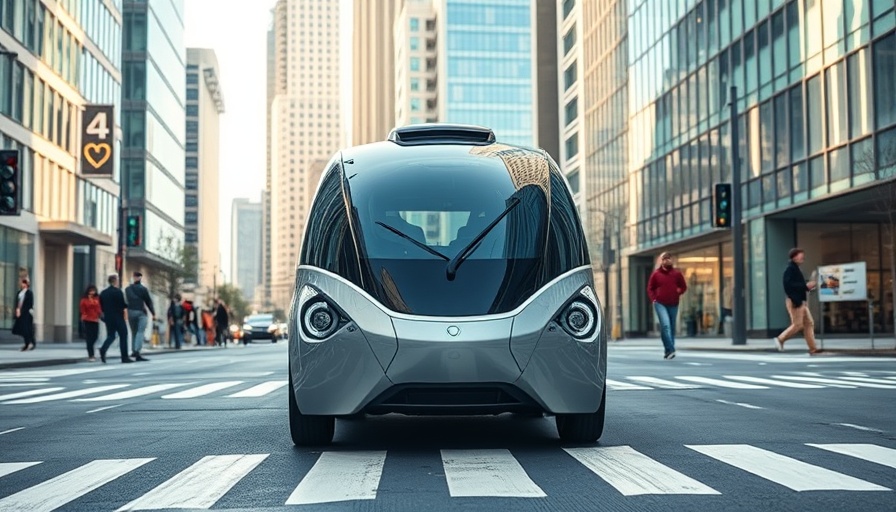
Waymo Expands Its Robotaxi Service Across Silicon Valley
In a move set to enhance its presence in Silicon Valley, Waymo has received the green light from the California Public Utilities Commission (CPUC) to extend its commercial robotaxi service in areas south of San Francisco. This expansion will allow Waymo to enter new communities and increase its fleet of driverless ride-hailing vehicles. Currently, Waymo's service operates in San Francisco and parts of Silicon Valley, covering an area of approximately 85 square miles, which includes Mountain View, Palo Alto, Los Altos, and Sunnyvale.
What This Means for Local Residents
This approval is exciting not just for Waymo, but for the communities involved. Residents are eagerly anticipating the convenience of automated transport, hinting at a future where rides could be summoned at the touch of a button without needing a human driver. Waymo has been steadily increasing its operations, providing around 250,000 paid trips weekly across various locations including Los Angeles, Phoenix, and Austin. The expansion means more accessible transportation options for residents who may rely on ridesharing services.
The Long-Term Vision: Access to Airports
Although the expansion focuses on the South Bay, Waymo is also eyeing the San Francisco International Airport (SFO). Currently, the company has been permitted to start mapping the airport's roadways to prepare for future operations. This phased approach indicates that while immediate expansion is on the horizon, a full-fledged service at the airport will require substantial planning and infrastructure development.
The Technological Backbone of Waymo's Services
Waymo’s success can be attributed to its significant technological advancements in autonomous vehicle capabilities. The company utilizes state-of-the-art sensors and artificial intelligence to create a safe and efficient driving experience. By leveraging data collected from its existing operations to enhance decision-making processes and improve mapping, Waymo aims to build a reliable robotaxi service that can adeptly navigate complex city environments. As competition in the realm of autonomous transportation heats up, safety remains a top priority, and Waymo's technology seeks to ensure that passengers feel secure while being transported.
Challenges and Opportunities Ahead
Despite this exciting expansion, challenges remain. Public acceptance of driverless technology continues to be a significant hurdle, with some residents expressing concerns about safety and reliability. However, as autonomous rides become more common, it's likely that public sentiment will evolve, possibly leading to widespread adoption. The potential for reduced traffic-related incidents and lower environmental impact through electric vehicles also adds to the optimistic narrative surrounding Waymo's expansion.
Future Predictions for the Robotaxi Industry
The future seems bright for the robotaxi sector in general. As more companies look to expand their autonomous fleets, the competition is bound to foster rapid advancements in technology. Industry experts predict substantial growth in consumer acceptance over the next few years, with a probable increase in service areas and fleets. This is not just about convenience; it’s about reshaping the entire transportation infrastructure of cities and creating new urban experiences that connect communities.
Conclusion: Embracing Change
With Waymo's expansion, residents in the Bay Area have a lot to look forward to. The growth of automated transport could redefine how we move around urban spaces, providing not only convenience but also potentially changing the dynamics of local economies. Waymo is leading the charge in a rapidly evolving transportation landscape that is essential for future development. For those interested in the latest updates and developments in technology and transport, staying informed will be vital. Keep an eye on Waymo and similar companies as they pave the way for new transportation paradigms.
 Add Row
Add Row  Add
Add 



Write A Comment